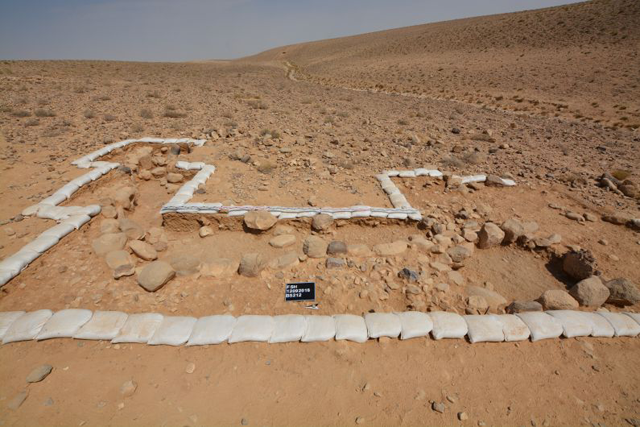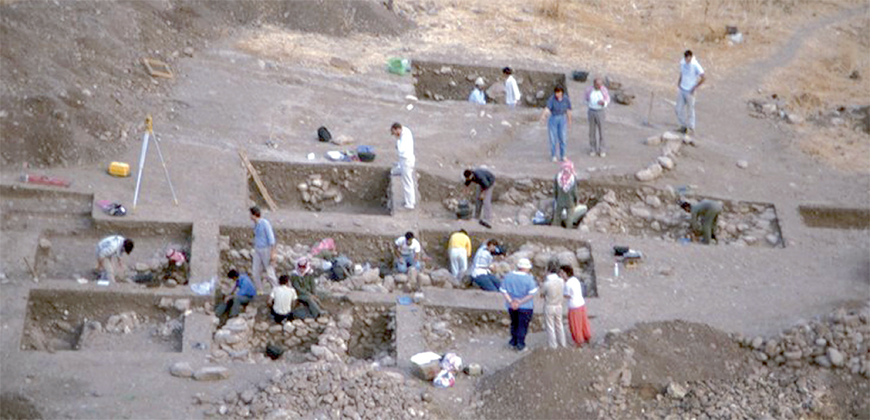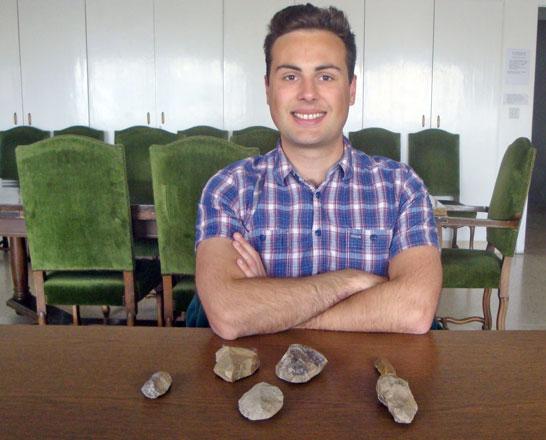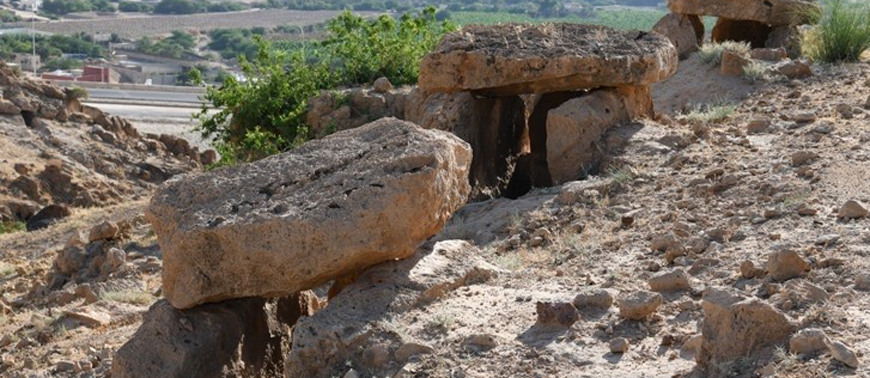You are here
Polish excavations at Huseiniya uncover early Bronze Age artefacts
By Saeb Rawashdeh - Feb 23,2025 - Last updated at Feb 23,2025

A JU archaeological team at Huseiniya, near the Desert Highway (Photo courtesy of Jagiellonian University)
AMMAN — A Polish archaeological team from Jagiellonian University (JU) excavated in 2021 at Huseiniya, near the Desert Highway. The site is located about 500 metres from the Harrat Juhayra site, which was investigated several years ago by a Japanese team of archaeologists led by Professor Sumio Fujii.
The vast site occupied the southern side of a small valley called Wadi Quseir and numerous stone concentrations were scattered throughout, forming small artificial mounds that concealed architectural relics.
“The surface was also marked with scatters of lithics and ceramic objects. While part of the site is directly threatened by the ongoing construction of a gas pipeline, it is mostly under threat of intense looting activity," said Michal Wasilewski.
"The site is located on a fluvial terrace, in a flat-bottomed, shallow, and currently dry river bed running from west to east,” said Wasilewski, adding that the valley itself is a part of a larger basin surrounded from the north, west, and east by hills formed, among others, by Pleistocene rocks of volcanic origin.
The hydrothermal phenomena associated with volcanic activity resulted in formation of massive local deposits of silicates up to several meters thick. Outcrops of these rocks occur at a short distance to the west of the archaeological site.
The most prominent sediments are of a Quaternary age and comprise gravels, sands, and silts of fluvial and aeolian origin.
“During the 2021 excavations, only two archaeological strata were recorded. One was connected with the functioning of the household [described below], and the other, located outside the building, consisted of collapsed mudbrick and stone material and was most likely a result of events occurring after the household went out of use," he said.
"Eight radiocarbon dates obtained from the household context date the dwelling’s occupation to the end of the 5th millennium BC, with the oldest date within the highest probability range being 4266 cal BC, and the youngest — 3967 cal BC,” Wasilewski explained.
Among the investigated structures was a rectangular dug-out building with stone walls, some of them in the form of orthostates, and a stepped entrance giving access to the structure from the south Near the entrance was a two part, internally divided stone installation, which, at least at one point in time, was used as a hearth.
The floor level of the building was probably covered with clay plaster. The series of eight radiocarbon dates ranging from 4331 to 3967 cal BC, obtained mainly from charcoal, place the functioning of this homestead in the Late Chalcolithic, Wasilewski said, noting that pottery finds help to date the discovered structure to the EB IA period.
“By far the most important find that helped confirm this chronology is a ledge handle of the ‘folded’ type, discovered in Locus. Vessels equipped with such handles first appeared at the beginning of EB I and then disappeared about halfway through this period,” Wasilewski underlined.
He added that worthy of note is the presence of holemouth jars, which differed from those found on other sites in Wadi Quseir, as they had a more closed shape and arms that sloped less steeply.
The site yielded a total of 976 lithic artifacts, 225 of which were found within the intact archaeological context, the archaeologist said, adding that the rest were scattered on the surface and in looters’ pits.
Flake production, mostly ad hoc, dominated in the inventory. An increase in the share of flakes first occurred at the end of the Neolithic, but it was the Chalcolithic and the Bronze Age that witnessed a more noticeable growth in their number.
“The assemblage from the site featured characteristic elements that in some ways relate more clearly to the Chalcolithic or, possibly, to the transitional period between the Chalcolithic and the Early Bronze Age."
"Among the more distinctive tools confirming this chronology were arched-backed blades, regular backed blades sometimes combined with perforators including those made on flat cortical, as well as forms resembling Palaeolithic chopper tools,” Wasilewski highlighted.
This site most likely contained settlement units scattered along a small seasonal stream. The environmental conditions in the late 5th millennium BC may have been more favourable than today’s arid and hyper arid conditions typical of this area, the scholar concluded.
Related Articles
AMMAN — The research in Wadi Ziqlab, located in Northern Jordan, has focused on the distribution and character of small Late Neolithic sites
AMMAN — Hundreds of thousands of miniscule stone flakes, some only millimeters in length, the scattered results of the hammering and bashing
AMMAN — The Umm Tuwayrat site is a dolmen field probably related to the Bronze Age located near the city of Shobak.














